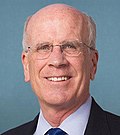2017 Seketese General Election: Difference between revisions
No edit summary |
No edit summary |
||
| Line 104: | Line 104: | ||
| swing6 = {{increase}} 1.18pp | | swing6 = {{increase}} 1.18pp | ||
}} | }} | ||
The 2017 Seketese General Election was held on March 26 2017 to elect members of the Commons Council, the lower house of the Hérvynsken. The President of Seketan, Fjedor Alesk formally dissolved the Commons Council on February 15 2017 at the request of Prime Minister [[Eris Kellisyen]]. | |||
The election saw Prime Minister Kellisyen re-elected as Prime Minister, albeit with a smaller minority in the Hérvynsken. After weeks of negotiations, on 19 April 2017, a coalition deal was struck between the Socialist and Labour parties, marking the first time Labour entered government. Labour made large gains, particularly in urban areas and their former coal-mining heartland. Their leader [[Lilli Maisolson]] would be sworn in on 28 April as the first woman Second Minister. Despite notable gains, CNy leader [[John Geosan]] resigned on election night, seeing the election as a failure on his part as the leader. He would be the only party leader to not also compete in the [[2021 Seketese General Election|next election]]. The Liberal Democrats suffered slightly, losing a handful of district seats to strategic voting. The regionalist Wilsk National Party and their longtime leader [[Marc Joels]] lost most of the gains they made in 2014, largely attributed to their [[Irvansky|provincial governments]] failed independence referendum. | |||
==Results== | |||
Revision as of 19:37, 24 February 2023
| |||||||||||||||||||||||||||||||||||||||||||||||||||||||||||||||||||||||||||||||||||||||||||||||||||||
All 294 seats to the Commons Council of the Hérvynsken 148 seats needed for a majority | |||||||||||||||||||||||||||||||||||||||||||||||||||||||||||||||||||||||||||||||||||||||||||||||||||||
|---|---|---|---|---|---|---|---|---|---|---|---|---|---|---|---|---|---|---|---|---|---|---|---|---|---|---|---|---|---|---|---|---|---|---|---|---|---|---|---|---|---|---|---|---|---|---|---|---|---|---|---|---|---|---|---|---|---|---|---|---|---|---|---|---|---|---|---|---|---|---|---|---|---|---|---|---|---|---|---|---|---|---|---|---|---|---|---|---|---|---|---|---|---|---|---|---|---|---|---|---|---|
| Opinion polls | |||||||||||||||||||||||||||||||||||||||||||||||||||||||||||||||||||||||||||||||||||||||||||||||||||||
| Turnout | 57.3% | ||||||||||||||||||||||||||||||||||||||||||||||||||||||||||||||||||||||||||||||||||||||||||||||||||||
| |||||||||||||||||||||||||||||||||||||||||||||||||||||||||||||||||||||||||||||||||||||||||||||||||||||
The 2017 Seketese General Election was held on March 26 2017 to elect members of the Commons Council, the lower house of the Hérvynsken. The President of Seketan, Fjedor Alesk formally dissolved the Commons Council on February 15 2017 at the request of Prime Minister Eris Kellisyen.
The election saw Prime Minister Kellisyen re-elected as Prime Minister, albeit with a smaller minority in the Hérvynsken. After weeks of negotiations, on 19 April 2017, a coalition deal was struck between the Socialist and Labour parties, marking the first time Labour entered government. Labour made large gains, particularly in urban areas and their former coal-mining heartland. Their leader Lilli Maisolson would be sworn in on 28 April as the first woman Second Minister. Despite notable gains, CNy leader John Geosan resigned on election night, seeing the election as a failure on his part as the leader. He would be the only party leader to not also compete in the next election. The Liberal Democrats suffered slightly, losing a handful of district seats to strategic voting. The regionalist Wilsk National Party and their longtime leader Marc Joels lost most of the gains they made in 2014, largely attributed to their provincial governments failed independence referendum.



